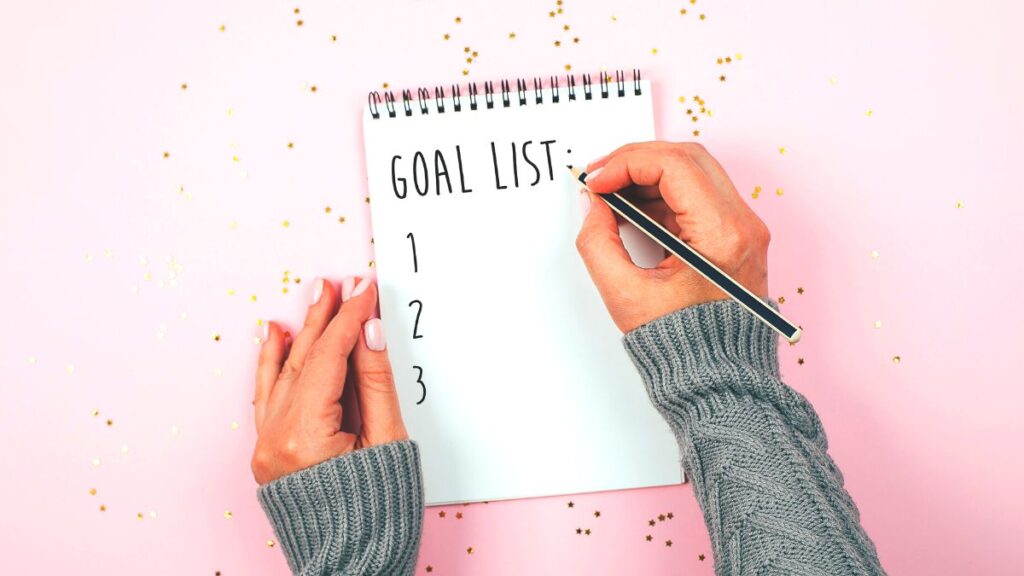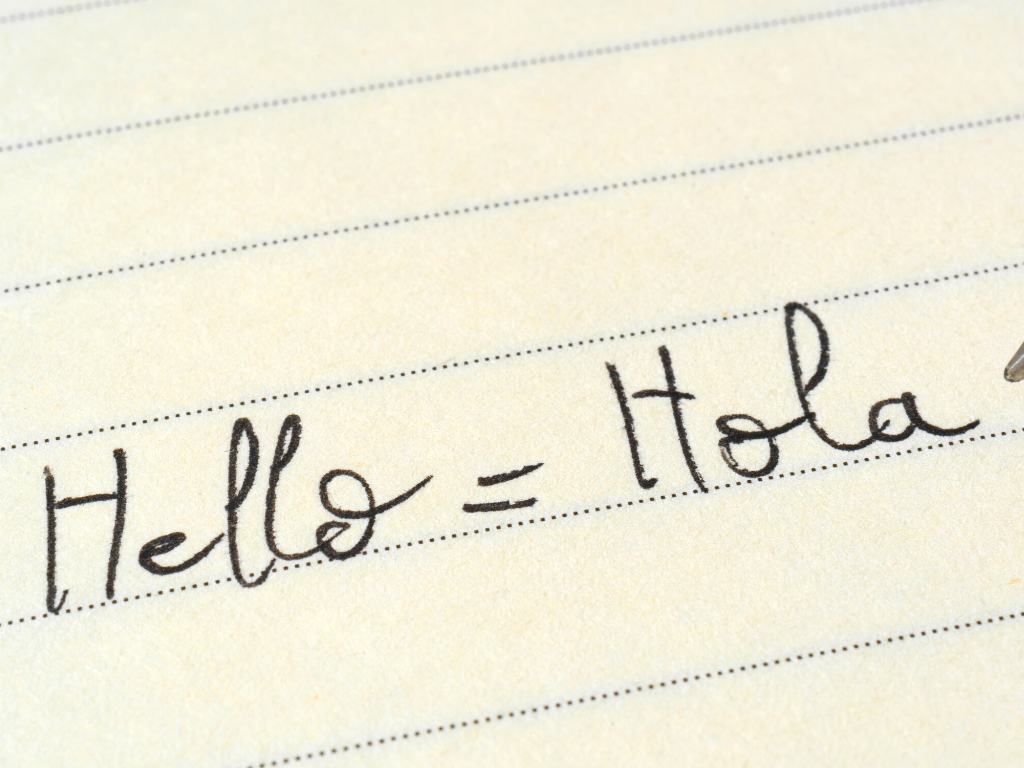10 Tips for Learning Spanish Quickly from a Spanish Teacher
Disclaimer: Links on this page may be affiliate links. If you make a purchase after clicking a link, I may receive a small compensation to help power my site at no cost to you.
Learning Spanish is something that you can’t do overnight. It’s a fact that it takes time, perseverance, and lots of practice to learn a second language.
However, if you have the right language learning strategies in place, you can accelerate your progress.
How do I know? Well, I’m a former Spanish teacher. Plus, I have a Master’s Degree in Foreign Language Education. In my program, I studied everything that has to do with second language acquisition from how the brain processes information to research-backed teaching methods.
Not to mention that Spanish is my second language. I have first-hand knowledge of what it takes to learn it—which is more important than anything if you ask me.
Today, I’m sharing my very best tips and tricks for learning Spanish fast. Scroll down to read more.
1. Make Spanish Memorable

Making learning memorable is foundational to both teaching and learning.
The basic concept is that participating in relatable, personal learning experiences helps you to retain information more easily. This tip to learn Spanish is especially effective in language learning where real-world application is a key to retention.
For example, I once realized I didn’t know how to say, “to fill up the tank” when I rented a car in Spain. I was standing inside the gas station trying to explain to the clerk that I wanted to fill up my car. Since it was a meaningful experience, the vocabulary is now etched into my brain!
Even if you’re not going to Spain (or another Spanish-speaking country) anytime soon, you can always come up with creative ways to make learning meaningful to you.
For instance, watch a movie that interests you on a platform like Lingopie, write Instagram captions about your trip in Spanish, or go to a museum and write about how different pieces evoke different emotions. You can use our list of Spanish art words as a guide.
If you really want to go all out, host a Spanish-themed tapas party. Here’s what I would do to make my tapas party meaningful:
- Send invitations written in Spanish to your Spanish-speaking friends or learning buddies
- Plan your menu, and make your list of ingredients in Spanish
- Follow the recipes for the tapas (and Spanish cocktails) in Spanish
- Have everyone commit to speaking only Spanish for the duration of the party
- Get a conversation starter game like Cuéntame to encourage dialogue
- Post about your party on social media in Spanish
- Write thank you notes in Spanish
Whatever you do, avoid memorizing. when you interact with the language in a way that’s meaningful to you, I promise you’ll retain it more easily and quickly.
2. Get as Much “Comprehensible Input” as You Can

The concept of “comprehensible input” is crucial in language learning. Termed “i+1” by Dr. Stephen Krashen, it refers to absorbing language content that is slightly above your current level of understanding, yet still understandable. This method is incredibly effective for improving your Spanish skills.
One of the best ways to get comprehensible input is through listening to Spanish podcasts, incorporating Spanish music into your routine, or watching Spanish television shows or movies.
Choose something that interests you, but make sure it’s not too easy or too hard. The goal of comprehensible input is to challenge yourself just enough to keep learning, but not so much that you become overwhelmed.
Reading is another powerful tool. Whether it’s books, magazines, recipes, Spanish-language blogs, graphic novels, or any other type of reading material. Start simple and gradually challenge yourself with more complex texts.
Again, you shouldn’t understand every word—otherwise, there would be nothing to learn! That’s the idea behind i+1.
Whichever method you choose, you’ll learn new vocabulary and sentence structures when you interact at a level that’s just slightly out of your reach.
3. Be Consistent

Experts have concluded that consistency is the backbone of mastering any new skill. Learning a language like Spanish is no exception.
Think of learning Spanish like completing a marathon. You can’t expect to run 26.2 miles if you only job once a week in the preceding months. Similarly, you can’t expect to become fluent in Spanish by being nilly-willy. It’s the regular practice that produces results over time.
Here are some strategies to help maintain consistency in your learning:
Set Realistic Goals: Start with small, achievable goals. For instance, commit to studying Spanish for 30 minutes each day.
Create a Study Schedule: Designate specific times in your day for Spanish study. Whether it’s during your morning coffee, on your commute, or before bed, having a set time each day helps establish a routine.
Track Your Progress: Keep a log of your study sessions and progress. This can be incredibly motivating, especially when you look back and see how far you’ve come.
✅ Download our free Spanish Daily Routine checklist to incorporate these Spanish language learning tips into your daily routine!
Lastly, consistency in language learning doesn’t mean you have to dedicate long hours each day, either. It’s about regular, focused practice that fits into your lifestyle. Even better, many language learning apps and online resources are designed to encourage daily practice.
Make Spanish a consistent part of your daily routine, and you’ll be amazed at the progress you can make in no time at all.
4. Use All Five Senses
Embracing a multi-sensory approach is one of my favorite Spanish learning tips. To clarify, this isn’t about engaging each sense in isolation. Rather, use all your senses to enrich your learning.
Here’s how you can apply this in your daily practice:
Watch TV: When you watch Spanish TV shows or films, turn on the subtitles. This simple action allows you to hear the language and see it written simultaneously, reinforcing your understanding and retention.
Use Flashcards: When using apps like Quizlet for flashcards, read the words, say them out loud, and click to flip. Combining all these elements makes your study sessions more effective.
Incorporate Movement: Movement can be a surprisingly effective tool in language learning. If you’re practicing vocabulary, try pairing each word with a specific gesture. This kinesthetic connection can help cement the words in your memory.
You might find certain combinations of senses work better for you than others. That’s okay. Experiment with different methods and find what suits your learning style best. Even if you think you’re not a kinesthetic learner, for example, give it a try.
5. Don’t Be Afraid to Make Mistakes
Certainly, one of the best ways to learn Spanish fast is to embrace mistakes. I’ve seen countless learners hold themselves back for fear of making errors.
The truth is, the more comfortable you become with making and learning from mistakes, the faster you will progress in your language skills.
To overcome this fear, practice speaking as much as possible. This leads to improved language skills and builds confidence. If you can find a language exchange in your city, that’s a great place to start. Making mistakes is expected and accepted!
Reflecting on your mistakes is another valuable practice. Keeping a journal of common errors can help you from making the same mistakes. I also found consulting this book on common pitfalls and how to avoid them helpful.
One thing is for certain. If you want to learn Spanish quickly, you can’t let the fear of making mistakes hold you back.
6. Find a Language Exchange Partner or Group

One of my top tips for quickly learning Spanish language exchange partners or groups. These events simulate everyday conversations and situations that you wouldn’t typically find in a textbook.
While I was living in Spain, I connected weekly with several intercambios (language exchange partners). I practiced conversational Spanish in a practical, real-world context while my Spanish partners honed their English.
Language exchange groups can often be found in your local community. Websites like Tandem and HelloTalk are also ways to find native speakers and other learners from around the world. These platforms are particularly enriching as they can expose you to different dialects and uses of Spanish.
Moreover, these exchanges aren’t just about language—they’re a two-way street where you not only learn Spanish faster but also gain insights into culture and a different way of life.
7. Get Your Verbs Down
Mastering verbs is essential in learning Spanish and other romance languages. In my experience, focusing on verbs early in your learning process can significantly improve your ability to communicate effectively.
Start by learning some of the most frequently used Spanish verbs (to be, to say, to want, etc.) Then, you must learn to conjugate verbs in various tenses, starting with the present tense.
Verb conjugation tables are your friends. Use them. I’d also pick up a copy of 501 Spanish Verbs if you’re serious about your Spanish studies. It’s the go-to resource for Spanish verbs.
Contextual learning is also vital—remember what we said about making learning meaningful? Instead of memorizing verb forms, try using them in sentences. This practice helps in understanding how verbs change in different contexts and tenses.
Without a doubt, dedicating a significant part of your Spanish studies to verb conjugation will pay off.
8. Study Grammar Formally

It’s a common misconception that you can become fluent simply by spending a few weeks in a Spanish-speaking country.
In reality, understanding the structure and rules of Spanish grammar is what ties all your learning together and accelerates your progress.
As an adult Spanish learner, making time to study might seem daunting. But it’s essential. To expand, formal study helps you understand why things are said in certain ways, ultimately enabling you to comprehend more complex topics.
To get started, invest in a good Spanish grammar book or online course. Resources like Babbel offer comprehensive grammar lessons integrated into their language courses. If you’re brushing up on your Spanish, I’ve used The Ultimate Spanish Review and Practice myself and highly recommend it. It’s excellent.
For a more guided approach, consider hiring an online Spanish tutor. Platforms like Preply or italki provide personalized feedback and tailor the learning experience.
💻 Enhance your Spanish skills with Babbel’s self-paced interactive courses. Designed for all levels, from beginners to advanced, enjoy tailored lessons and real-life conversations. Try Babbel – Click Here for a Free Lesson!
9. Immerse Yourself in a Spanish-speaking Country

Undoubtedly, immersion in a Spanish-speaking country is one of the most effective ways to enhance your language skills.
As someone who lived in Spain, I can attest to the fact that immersion not only accelerates your learning but also deepens your cultural understanding.
When you live in a Spanish-speaking country, even the simplest daily activities become opportunities for learning. From buying groceries to asking for directions, each interaction is a mini-language lesson. You’ll start picking up new words and phrases while making connections to what you’re studying.
Dig deeper into the language by getting a language partner, attending cultural events, or participating in workshops.
In sum, the more you put yourself out there, the more quickly you’ll learn Spanish.
10. Write in Spanish
Writing in Spanish is a powerful, yet often overlooked tool. However, writing is critical to the learning process!
It helps you internalize the language you’re studying and discover new ways to express yourself. Really, it’s such a helpful process. I myself have filled so many notebooks from TJ Maxx over the years!
I encourage you to start incorporating Spanish writing into your daily routine. It doesn’t have to be a daunting task. Get a journal (these are similar to mine) and your favorite pens. Then, begin with something as simple as writing a short paragraph about your day, a list of vocabulary words you’re studying, or even a short story.
As you progress, your writing will become more fluid, and your overall command of the language will strengthen.
Again, if you want to progress quickly with your Spanish, start writing.
One Final Tip to Learn Spanish Fast
As we wrap up this list of tips for learning Spanish faster, I want to leave you with one final tip: embrace the joy of learning.
Learning Spanish is not just about acquiring a second language—it’s a gateway to a rich and diverse culture. Every word you learn, every mistake you make, and every conversation you have is a step towards a broader understanding of the world. 💛

